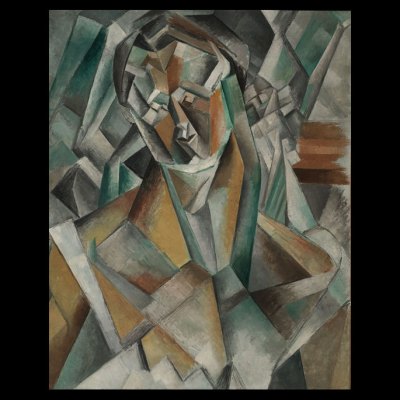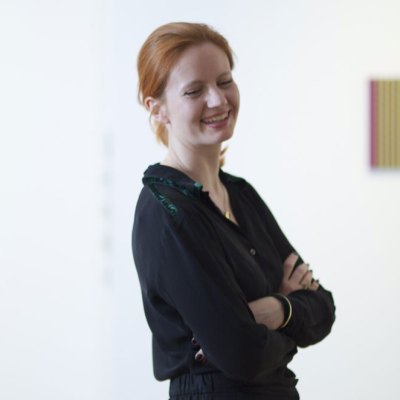Although one never knows quite what might come up at auction, with post-war and contemporary art one has a pretty good idea. So it comes as no surprise to learn that the star highlight of the tightly edited blue-chip New York auctions this May is a Cy Twombly ‘blackboard’ painting featuring blue loops on a grey ground. Two comparable ‘blackboards’ have changed hands for more than $65m apiece in the last 18 months. Sotheby’s coyly predicts Untitled (New York City) of 1968 will make over $40m in its 11 May evening sale. Estimates, like the market, have become more circumspect.
The line-up also includes those other evening sale stalwarts, Francis Bacon – Two Studies for a Self-Portrait of 1970 (estimate $22m–$30m) – and Andy Warhol, personified by Self-Portrait (Fright Wig) of 1986 ($7m–$10m). Christie’s New York counters with the likes of a 1957 Mark Rothko, No. 17 ($30m–$40m). For reasons of variety, none of the above is illustrated or discussed here.
Instead we have Joan Mitchell’s monumental Noon of 1969–70, offered at Christie’s on 10 May. Mitchell was a ‘second generation’ abstract expressionist, but unlike de Kooning, Gorky and Kline who certainly informed her work, she was less interested in expressing her emotional state than conveying her experience of landscape. She left New York for France in 1955, and with an inheritance acquired, in 1968, a sprawling estate at Vétheuil that included the house in which Monet had lived and worked between 1878 and 1881. Her new studio allowed her to paint on a much larger scale, and the airy and expansive canvases that she confected there evoke the luminous colours and the dancing light of the abundant landscape and adjoining river. Her delicately balanced and structured images on pale, neutral grounds seem to be lit from within. This dazzling painting comes with expectations of $5m–$7m.
Noon (1969–70), Joan Mitchell. © Christie’s Images Lltd 2016
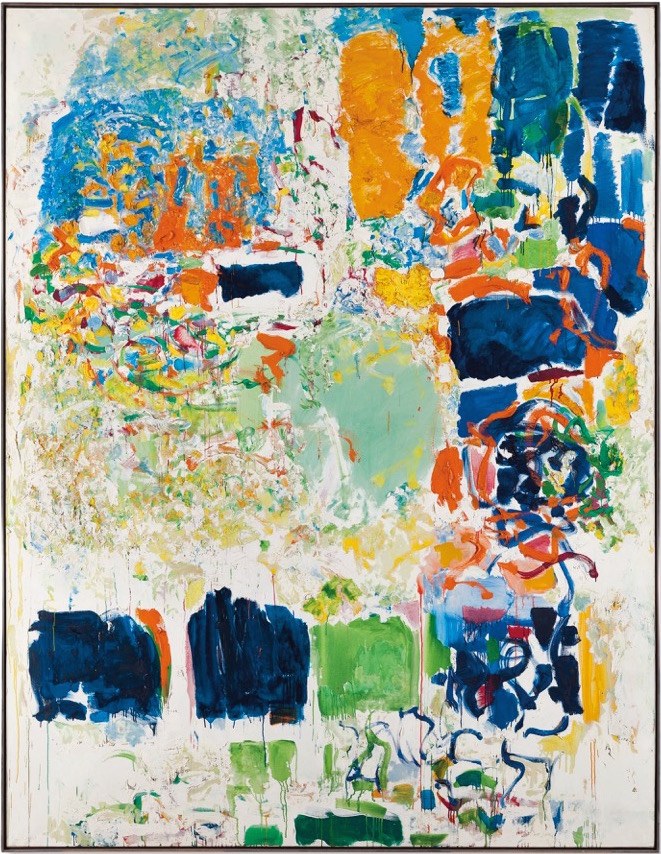
Inevitably, the influence of Monet looms large here, the brushwork recalling the dappled watery surfaces of the great series of water-lily ponds at Giverny. And those magical surfaces themselves also take a bow at Christie’s. Le Bassin aux nymphéas, from the late series of 14 canvases executed in 1918–19, is the highlight of its 12 May Impressionist & Modern evening sale. Monet has focused tightly on a patch of pond and the eye meanders around three groups of lily pads. Another work from the series fetched a record £40.92m ($80.5m) at Christie’s London in 2008; this one has an estimate of $25m–$35m.
Le Bassin aux nymphéas (1919), Claude Monet. © Christie’s Images Lltd 2016
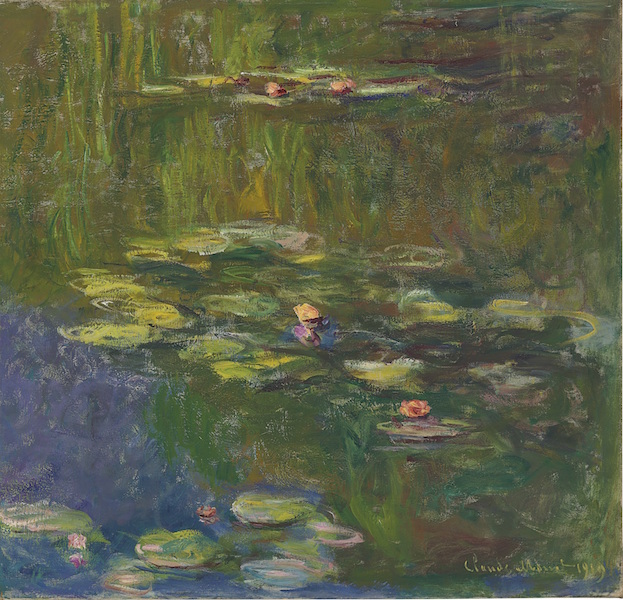
It was during a casual visit to an exhibition of African art at the Grand Palais in Paris in 1966 that the American doctors Daniel and Marian Malcolm first encountered the sculpture of Sub-Saharan Africa. It was love at first sight, and they returned to New York and spent the next 40 or so years amassing what became one of the country’s great post-war collections. Those were the days when collectors would take Friday afternoons off to learn all they could by walking around museums and galleries. Not focusing on any particular tribe or form, they chose instead to represent the diversity and humanity of African sculpture.
Following her husband’s death last year, Dr Marian Malcolm is selling a small part of the collection – some 12 lots – at Sotheby’s in New York on 7 May, and a further dozen of equal calibre in Paris on 22 June. Even when they had the resources to buy valuable pieces, the couple never stopped acquiring exceptional examples of any type, however inexpensive, and this approach is reflected in these offerings. The highlight of the 7 May sale, however, is one of the most important pieces in the collection, a maternity figure from the Kongo’s Yombe tribe carved by the Master of Kasadi, only recently returned from the Metropolitan Museum of Art’s landmark ‘Kongo: Power and Majesty’ show.
The exhibition identified the hands of various individual but still anonymous artists. The work of the Master of Kasadi, named after the village in which two of his works were found, and probably active around 1900, is distinguished by its honey-coloured wood, and the refined quality and complexity of its carving. This is evident in the decorative scarification on the figure’s back, testimony to her sexual appeal – as are her filed teeth – while her knitted hat or mpu suggests her high rank. There is a depth to the patina suggestive of ritual use. Estimate $2m–$3m.
Kongo-Yombe maternity figure, the Master of Kasadi, Democratic Republic of Congo. Courtesy Sotheby’s
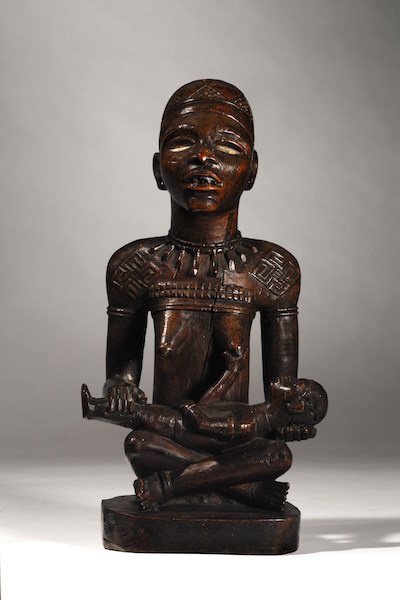
There is a tactile quality, too, to the hyperrealist draperies of Claudio Bravo but they are also strangely mystical, in the way that a Zurbarán still life exalts and transcends the everyday. Indeed, Bravo has said that it was the Spanish master’s works in Madrid that led to his reverence for textiles. He has also said that the initial inspiration for his paintings of packages, wrapped canvases and draperies was the work of some of the New York abstract expressionists, and the meditative Rothkos in particular. There is certainly a Colour Field aspect to The Emperor of 1973, a bravura, art-historical sash of red and blue, and a highlight of Sotheby’s New York 24 May Latin American sale ($1m–$1.5m).
Colour Field painting – and Abstract Expressionism in general – leads back to Christie’s New York’s Post-War & Contemporary day sale on 11 May, which presents 21 works from the collection of Clement Greenberg and his wife, Jenny. While a significant portion of the collection went to the Portland Art Museum in Oregon in 2000, a number of works of family interest were retained. Alongside pieces by Kenneth Noland and Jules Olitski is a sketch of the critic – inscribed ‘Clem drinks coffee’ – by a former girlfriend, Helen Frankenthaler ($15,000–$20,000), and Tony’s Gift, a stainless steel work of 1966 presented by his close friend Anthony Caro ($250,000–$350,000).

